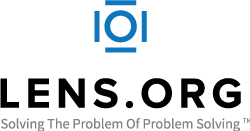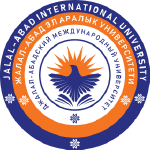Knowledge, awareness, and self-care practices of hypertension among cardiac hypertensive patients living in Jalal-Abad, Kyrgyzstan
DOI:
https://doi.org/10.63666/ejsmr.1694-9013.1.I.2025.19Keywords:
Systolic blood pressure, hypertension, cardiac patients, outpatient departmentAbstract
Introduction:
This study investigates the knowledge, awareness, and self-care practices of hypertension among cardiac hypertensive patients living in Jalal-Abad, Kyrgyzstan, and students of Jalal-Abad State University, hypertension is an important global health challenge, leading to high risk of cardiac and chronic kidney diseases causing death and disabilities: obesity, physical inactivity, and inadequate nutrition.
Methodology:
Among many hypertensive patients living in Jalal-Abad Kyrgyzstan, we gathered responses from about 120 patients with the help of a questionnaire method. We write a questionnaire of about 40 questions in English as well as in the Russian language. We also informed all the respondents about the ethical information that we will not use their names or other personal information in our study. All the respondents answer our questionnaire with their own knowledge.
Result and discussions:
According to the results, some of the respondents know about their family history of hypertension, 55.0% of respondents think that family history plays a role in hypertension,73% respondents think that obesity is the cause of hypertension, many respondents think that smoking, aging, alcohol and junk food is the cause of hypertension.67.5% of respondents acknowledged that physical activity and 75% think that quitting smoking can help treat hypertension.
Conclusion:
The study concludes that hypertension prevalence is increasing worldwide and an estimated 972 million people in the world are suffering from HTN. Incidence rates of hypertension range between 3% and 18% depending on the age, gender, ethnicity, and body size of the population. Mortality from stroke and ischemic heart disease doubles with each 20 mm Hg increase in systolic blood pressure from levels as low as 115mm Hg and with each 10 mm Hg increase in diastolic BP from levels as low as 75 mm Hg.
References
1. Silva TS da, Neves Júnior MP. Overview of Morbidity and Mortality from Diabetes Mellitus and Systemic Arterial Hypertension in the State of Bahia, Brazil, between 2010-2022. Rev Bras Med Fam Comunidade. 2025 Feb.19(46):4458. https://doi.org/10.5712/rbmfc19(46)4458
2. Hajjar I, Kotchen JM, Kotchen TA. Hypertension: trends in prevalence, incidence, and control. Annu Rev Public Health. 2006;27:465-90.
https://doi.org/10.1146/annurev.publhealth.27.021405.102132
3. Lee K, Kim BS, Jeon J, Shin DW, Lee JE, Huh W, Han KD, Jang HR. Resolution of hypertension after kidney transplantation is associated with improved kidney transplant outcomes: a nationwide cohort study. J Hypertension. 2025;43(3):529-537. https://doi.org/10.1097/HJH.0000000000003938
4. Drozdz D, Alvarez-Pitti J, Wójcik M, Borghi C, Gabbianelli R, Mazur A, Herceg-Čavrak V, Lopez-Valcarcel BG, Brzeziński M, Lurbe E, Wühl E. Obesity and cardiometabolic risk factors: from childhood to adulthood. Nutrients. 2021;13(11):4176. https://doi.org/10.3390/nu13114176
5. Jing G, Liu X, Shi J, Xue J, Peng H, Shi H. Joint trajectories of lifestyle indicators and their associations with blood pressure among Chinese middle school students. Nutrients. 2024;16(17):2994.https://doi.org/10.3390/nu16172994
6. Ewald DR, Haldeman LA. Risk factors in adolescent hypertension. Glob Pediatr Health. 2016;3:1-7. https://doi:10.1177/2333794X15625159
7. Moura IH, Vieira EES, Silva GRF, Carvalho RBN, Silva ARV. Prevalence of hypertension and its risk factors in adolescents. Acta Paulista De Enfermagem. 2015 Jan;28(1):81-6. https://doi.org/10.1590/1982-0194201500014
8. https://www.heart.org/en/health-topics/high-blood-pressure/understanding-blood-pressure-readings
9. Spagnolo A, Giussani M, Ambruzzi AM, et al. Focus on prevention, diagnosis and treatment of hypertension in children and adolescents. Italian Journal of Pediatrics. 2013;39:20 https://doi.org/10.1186/1824-7288-39-20
10. Matlabi M, Esmaeili R, Moshki M, et al. The status and predictors of hypertension preventive nutritional behaviors in adolescents based on the constructs of the Theory of Planned Behavior. Electron Physician. 2018;10(1):6223-6230 https://doi.org/10.19082/6223
11. Bilal M, Haseeb A, Lashkerwala SS, et al. Knowledge, awareness and self-care practices of hypertension among cardiac hypertensive patients. Glob J Health Sci. 2015 Jun 1;8(2):9-19. doi:10.5539/gjhs.v8n2p9.
12. Satyal GK, Rai L, Gautam R, Dangol BK, Shakya R. Knowledge and Self-Care Practice on Hypertension among Hypertensive Patients in a Tertiary Level Hospital of Kathmandu. Journal of Institute of Medicine. 2020 Aug. 31;42(2):10-5. https://nepjol.info/index.php/JIOM/article/view/37528
13. Kazancioğlu R. Risk factors for chronic kidney disease: an update. Kidney Int Suppl. 2013;3(4):368-371.https://doi.org/10.1038/kisup.2013.79.
14. Pirasath S, Sundaresan T. Descriptive cross-sectional study on knowledge, awareness and adherence to medication among hypertensive patients in a tertiary care center, Eastern Sri Lanka. SAGE Open Medicine. 2021;9. https://doi.org/10.1177/20503121211012497
15. Yang Q, Xu L, Gao Q, Gao Z. Control of pulse pressure and factors affecting it among the geriatric population suffering from hypertension within the community. Reviews in Cardiovascular Medicine. 2025;26(2):26156. https://doi.org/10.31083/RCM26156
Downloads
Published
Issue
Section
License
Copyright (c) 2025 Eurasian Journal of Scientific and Multidisciplinary Research

This work is licensed under a Creative Commons Attribution-NonCommercial-NoDerivatives 4.0 International License.












